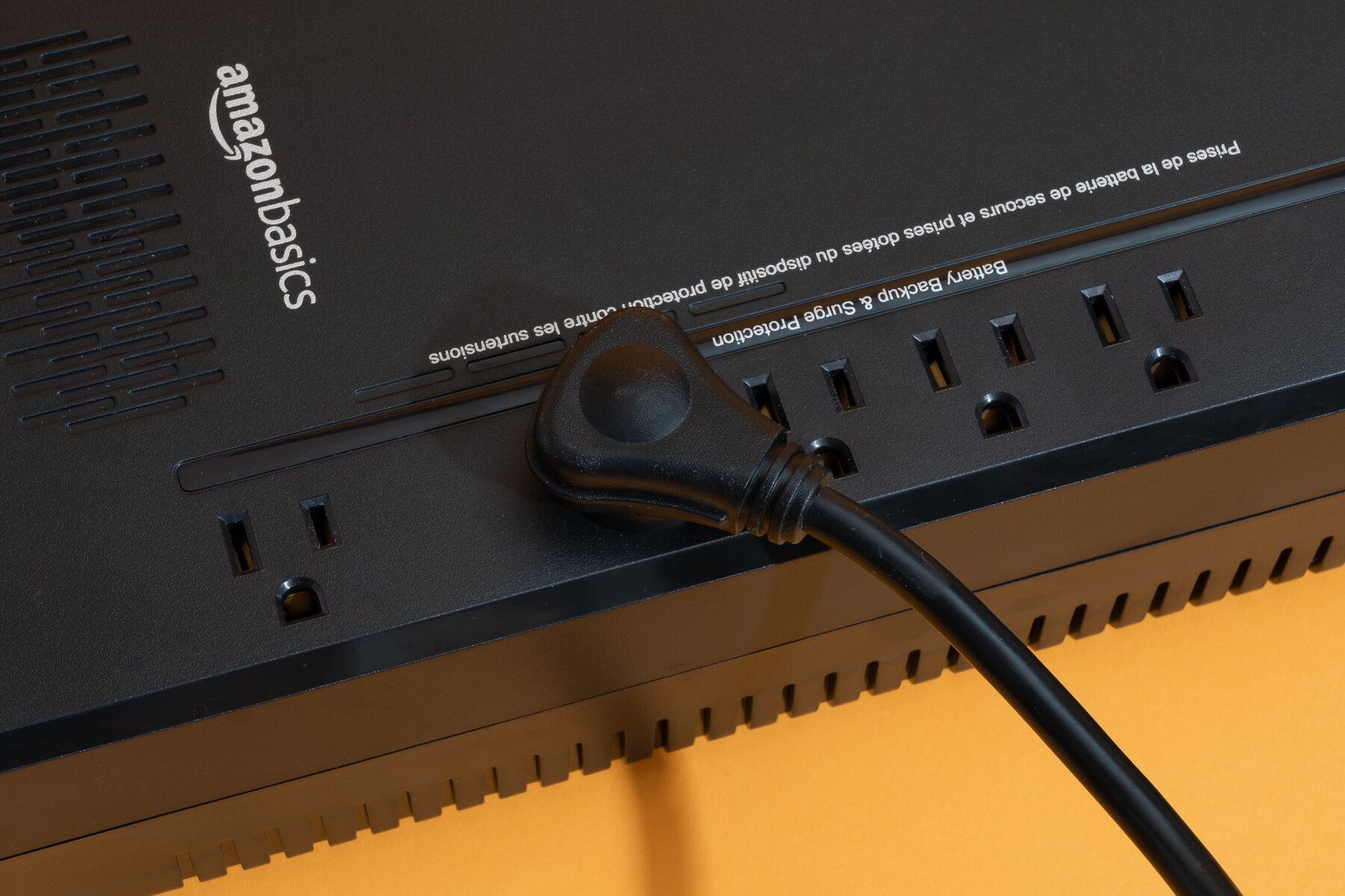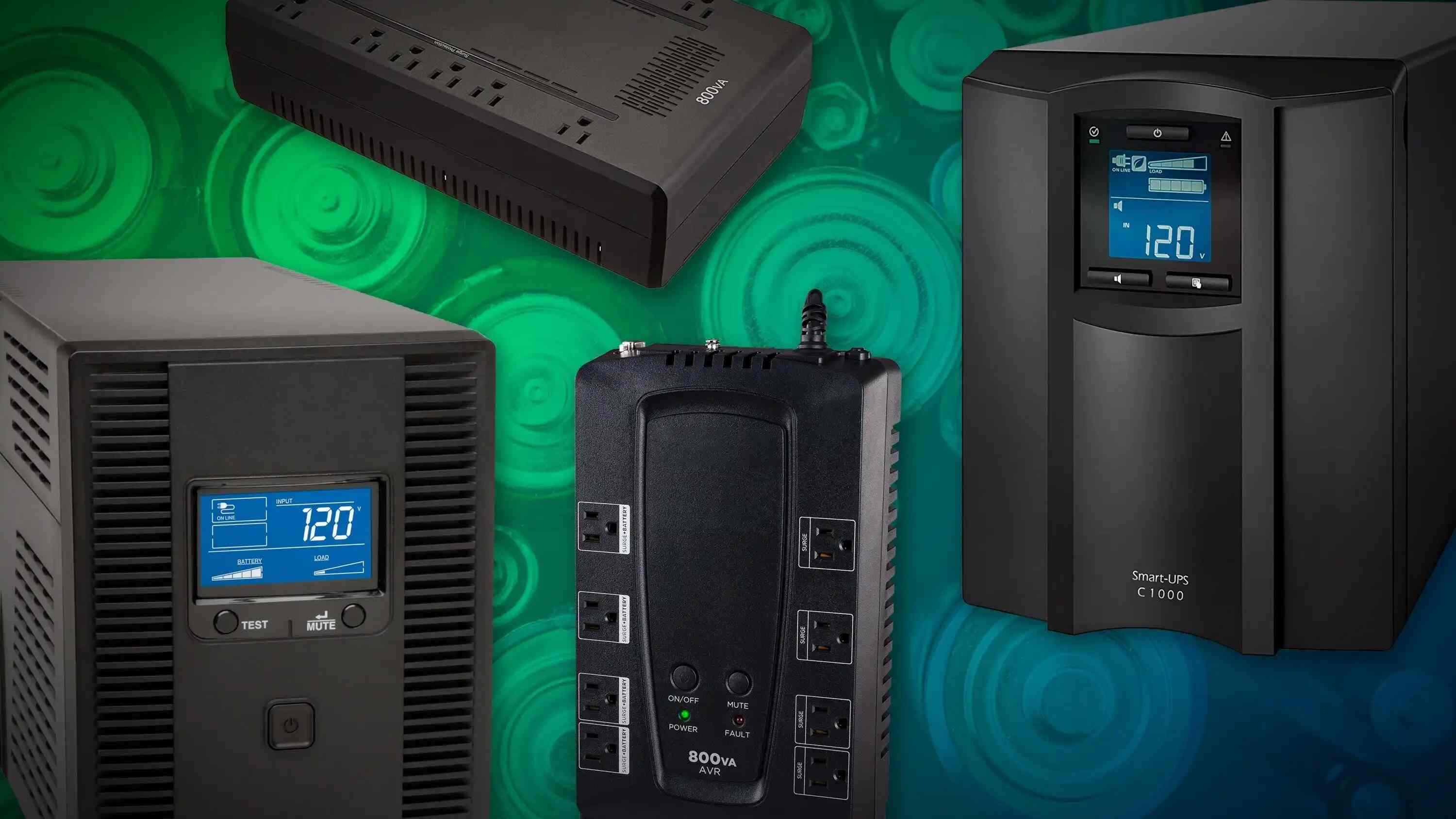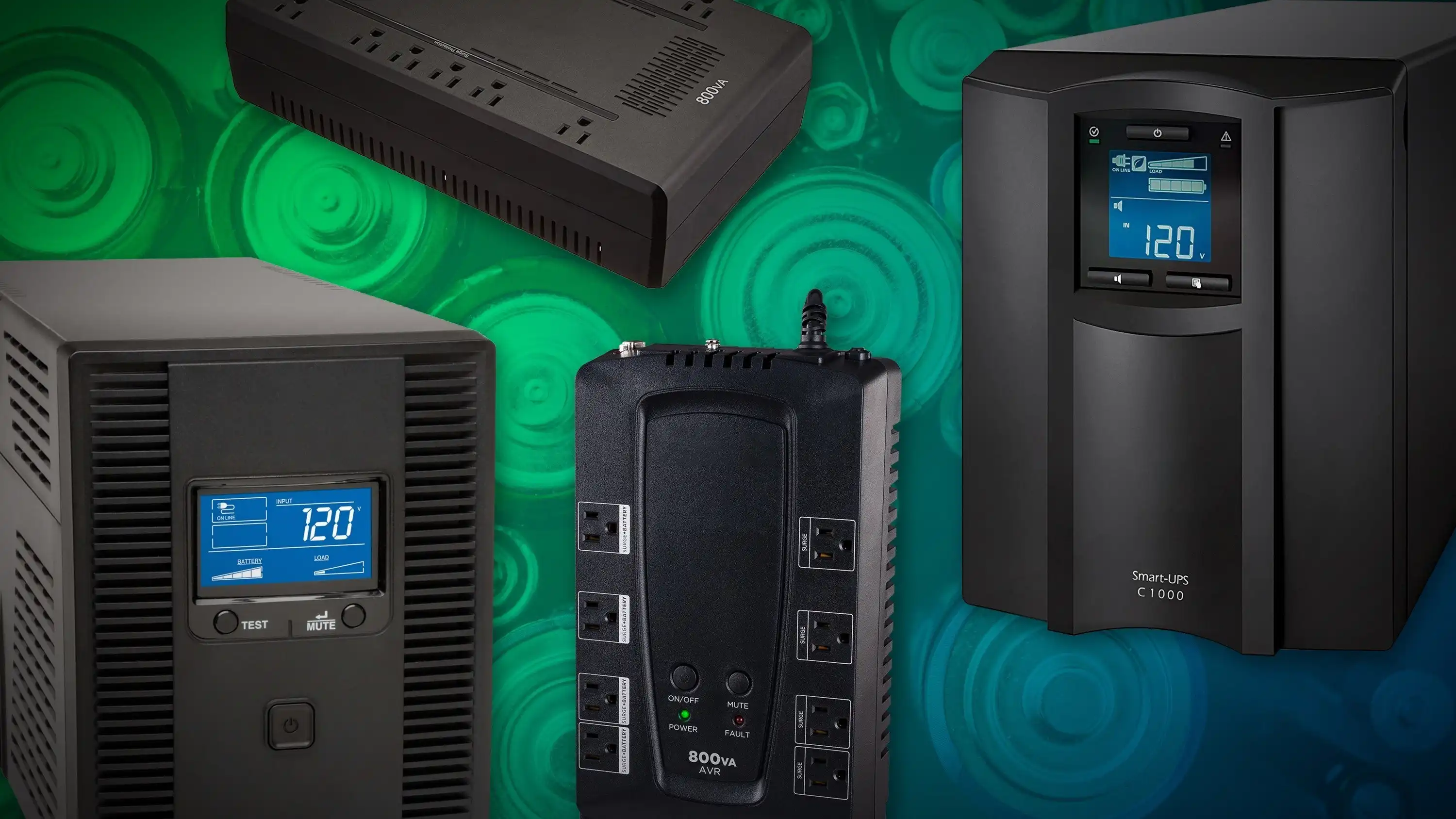Introduction
Welcome to the world of UPS battery run time! In this article, we will explore the various factors that determine how long a UPS battery can provide backup power. Understanding these factors is crucial for both individuals and businesses relying on uninterruptible power supplies to keep their devices running during power outages or fluctuations.
A UPS, or uninterruptible power supply, is a device that provides short-term backup power when the main power source fails. It is commonly used to protect sensitive electronic equipment, such as computers, servers, and network devices, from sudden power loss or voltage irregularities. The battery component of a UPS is responsible for supplying power during outages or until an alternate power source can be activated.
There are several key factors that determine the run time of a UPS battery. By understanding these factors, users can optimize their battery run time and ensure that they have sufficient backup power to meet their needs. Without further ado, let’s dive into the specifics!
Battery Capacity
The battery capacity is one of the primary factors that determine the run time of a UPS battery. It refers to the amount of energy that a battery can store and deliver. Typically measured in ampere-hours (Ah) or kilowatt-hours (kWh), a higher battery capacity indicates a longer run time.
When selecting a UPS, it is crucial to consider the power requirements of the connected devices to determine the appropriate battery capacity. Ensuring that the UPS has sufficient capacity to meet the power demands can prevent premature battery drain and ensure a longer run time.
For example, a UPS with a battery capacity of 1000VA (volt-ampere) may provide a longer run time when supporting devices with lower power requirements, such as a desktop computer. However, if the UPS is connected to power-hungry equipment like a server or a network switch, the run time will be significantly reduced.
It’s important to note that the battery capacity alone does not guarantee a longer run time. Other factors, such as the load on the UPS, its efficiency, battery age, and ambient temperature, can impact the actual run time provided by the battery. Therefore, it is essential to consider these factors collectively when estimating the expected run time of a UPS battery.
Load
The load refers to the total amount of power that a UPS is supplying to the connected devices. It plays a significant role in determining the run time of a UPS battery. The higher the load, the faster the battery will drain, resulting in a shorter run time.
When determining the load on a UPS, it is important to consider both the active load and the reactive load. The active load includes devices such as computers, servers, and networking equipment that consume power continuously. The reactive load includes devices like motors, transformers, or power supplies that draw additional power during startup or when running at full capacity.
It’s crucial to correctly estimate the load on a UPS to ensure that the battery can meet the power requirements during an outage. Overloading a UPS by connecting devices that exceed its capacity can lead to a shorter run time and potential damage to the UPS system.
Additionally, it’s worth noting that the load on a UPS can fluctuate. During normal operation, the load may vary based on the usage patterns of the connected devices. It’s essential to account for these fluctuations when estimating the run time and selecting an appropriate UPS system.
Efficient load management practices can also help optimize battery run time. This includes prioritizing critical devices and shutting down non-essential equipment during an outage to reduce the load on the UPS. By managing the load effectively, users can maximize the run time and ensure that essential devices remain powered for as long as possible.
Efficiency
The efficiency of a UPS system is another crucial factor that affects the battery run time. Efficiency refers to the ratio of the output power provided by the UPS to the input power drawn from the main power source. The higher the efficiency, the more effectively the UPS utilizes the input power, resulting in a longer battery run time.
When a UPS operates in battery mode, it utilizes the stored energy from its battery to supply power to the connected devices. However, it’s important to note that there will always be some inherent power loss during this conversion process. This power loss is usually in the form of heat dissipation.
UPS systems with higher efficiency have less power loss, meaning more of the battery’s energy is effectively utilized, resulting in longer run times. UPS units that boast high-efficiency ratings, such as 95% or above, offer significant benefits in terms of optimizing battery run time and reducing energy consumption.
It’s worth mentioning that the efficiency of a UPS system can vary based on the load it is supporting. UPS units are typically more efficient when operating at higher loads compared to lower loads. Therefore, it is important to consider the expected load profile when choosing a UPS to ensure optimal efficiency and longer battery run times.
In addition to selecting an efficient UPS system, regular maintenance and monitoring can further enhance efficiency and extend battery run time. This includes ensuring proper ventilation to dissipate heat, cleaning or replacing air filters, and periodically evaluating and adjusting the UPS settings to optimize energy utilization.
Ambient Temperature
The ambient temperature in which a UPS operates has a significant impact on its battery run time. Batteries are sensitive to temperature, and their performance can be greatly affected by extreme heat or cold conditions.
Most UPS systems are designed to operate within a specific temperature range, typically between 20°C (68°F) and 25°C (77°F). When the ambient temperature exceeds this range, the battery’s capacity to store and deliver power may decrease, resulting in a shorter run time.
High temperatures can accelerate the chemical reactions within the battery, leading to faster self-discharge. It can also cause electrolyte evaporation, increased internal resistance, and reduced overall battery life. On the other hand, extremely low temperatures can cause the battery’s internal chemistry to slow down, reducing its ability to deliver power efficiently.
It’s crucial to monitor and control the ambient temperature where the UPS is located to optimize battery run time. This can be achieved by ensuring proper ventilation and airflow around the UPS, avoiding direct exposure to sunlight or heat sources, and maintaining a controlled environment, especially in areas prone to temperature extremes.
Furthermore, some modern UPS systems incorporate temperature compensation features that automatically adjust the charging parameters based on the ambient temperature. This helps to optimize the battery’s performance and extend the run time despite variations in temperature.
Regularly monitoring the ambient temperature and taking appropriate measures to maintain it within the recommended range can significantly contribute to maximizing the UPS battery run time and ensuring reliable backup power during outages.
Battery Age
The age of a UPS battery is an important factor in determining its run time. Over time, batteries undergo chemical reactions and natural degradation, resulting in a decrease in their overall capacity and performance.
As a battery ages, its ability to store and deliver power diminishes, leading to a shorter run time during an outage. The rate of degradation can vary depending on several factors, including the battery chemistry, usage patterns, environmental conditions, and maintenance practices.
Lead-acid batteries, commonly used in UPS systems, are particularly susceptible to the effects of aging. This type of battery chemistry experiences gradual deterioration, known as sulfation. Sulfation occurs when lead sulfate crystals accumulate on the battery plates, reducing the active surface area and inhibiting the chemical reaction that generates electrical energy.
Regular maintenance and periodic battery testing can help assess the state of the battery and identify signs of aging or deterioration. This enables proactive measures to be taken, such as replacing aging batteries before they reach a critical point where their run time is significantly reduced.
It’s important to note that the overall lifespan of a UPS battery can vary depending on various factors, including the quality of the battery, operating conditions, and usage patterns. Generally, lead-acid batteries have a lifespan of 3 to 5 years, while newer lithium-ion battery technologies offer longer lifespans of around 5 to 10 years.
Proper battery management practices, such as regular cleaning, ensuring appropriate charge and discharge cycles, and adhering to manufacturer guidelines for maintenance and replacement, can help extend the battery’s effective life and maintain optimal run time.
By being aware of the age of your UPS battery and taking appropriate maintenance and replacement steps, you can ensure reliable performance and optimal run time when you need it most.
Charging Method
The charging method employed by a UPS can impact the battery’s run time and overall performance. There are typically two types of charging methods used in UPS systems: continuous/trickle charging and smart charging.
Continuous or trickle charging involves supplying a constant low-level charge to the battery, keeping it at full capacity at all times. This charging method is commonly used in older UPS systems and is effective in maintaining battery readiness. However, it may result in reduced battery life due to the constant charging, which can cause increased heat and accelerated chemical reactions.
On the other hand, smart charging, also known as intelligent charging, employs advanced algorithms and sensing mechanisms to optimize the charging process based on the battery’s actual needs. Smart charging systems monitor battery voltage, temperature, and other variables to deliver the appropriate charging voltage and current at different stages of the battery’s discharge cycle.
Smart charging helps to prevent overcharging and undercharging, which can both negatively impact battery life and run time. By adapting the charging process to the battery’s condition, smart charging systems can extend the battery’s life while ensuring optimal run time during power outages.
It’s worth noting that not all UPS systems feature smart charging capabilities. Some lower-end or entry-level models may use continuous or trickle charging methods. Therefore, when selecting a UPS, it is advisable to consider models that incorporate smart charging technology for improved battery longevity and run time.
Additionally, it’s important to follow the manufacturer’s guidelines and recommendations for charging methods and cycles to ensure proper battery maintenance and optimization.
Implementing a suitable charging method is essential for maximizing the run time and lifespan of a UPS battery, allowing you to have reliable backup power when you need it most.
Battery Type
The type of battery used in a UPS system has a significant impact on the battery’s run time, performance, and overall efficiency. There are different battery chemistries available for UPS applications, with the most common types being lead-acid and lithium-ion.
Lead-acid batteries have been widely used in UPS systems for many years. They are cost-effective, readily available, and provide sufficient backup power for most applications. However, lead-acid batteries typically have a shorter lifespan and lower energy density compared to other battery types. They also require regular maintenance, such as topping up with distilled water and periodic equalization charging.
In recent years, lithium-ion batteries have gained popularity in UPS applications due to their higher energy density, longer lifespan, and lower maintenance requirements. Lithium-ion batteries offer better efficiency, faster charging times, and a smaller footprint compared to lead-acid batteries. They also have a longer shelf life and can operate effectively over a wider range of temperatures.
While lithium-ion batteries offer several advantages, they also tend to have a higher upfront cost. However, the total cost of ownership over the lifespan of the battery is often lower due to their extended cycle life and reduced maintenance needs.
When selecting a UPS system, it’s important to consider the specific requirements and budget. Lead-acid batteries may be suitable for basic backup power needs, while lithium-ion batteries are ideal for critical applications that require longer run times, higher efficiency, and minimal maintenance.
It’s worth noting that the choice of battery type depends on various factors, including the load, expected run time, available space, budget, and the desired performance of the UPS system. Consulting with experts or UPS manufacturers can help determine the most suitable battery type for your specific requirements.
Regardless of the battery type, proper maintenance, monitoring, and adherence to manufacturer guidelines are essential for ensuring optimum performance and reliable backup power.
Conclusion
Understanding the factors that determine UPS battery run time is essential for maximizing the effectiveness and reliability of backup power during outages. By considering these factors, users can make informed decisions when selecting a UPS system and optimize its performance to meet their specific needs.
The battery capacity, load, efficiency, ambient temperature, battery age, charging method, and battery type all play crucial roles in determining the run time of a UPS battery. It’s important to carefully evaluate these factors and their interplay to estimate the expected run time and ensure that the UPS system can deliver sufficient backup power.
Proper load management, maintenance, and monitoring are key to optimizing battery run time. Managing the load efficiently, maintaining appropriate ambient temperature, and utilizing smart charging technology can dramatically extend the run time and overall lifespan of the battery.
Additionally, selecting the right battery type for the specific requirements and considering factors such as cost, lifespan, maintenance needs, and performance can further optimize UPS battery run time and reliability.
In conclusion, by incorporating these considerations into the decision-making process, users can ensure that their UPS system provides reliable and adequate backup power, even during extended power outages, to protect their valuable equipment and data.

























